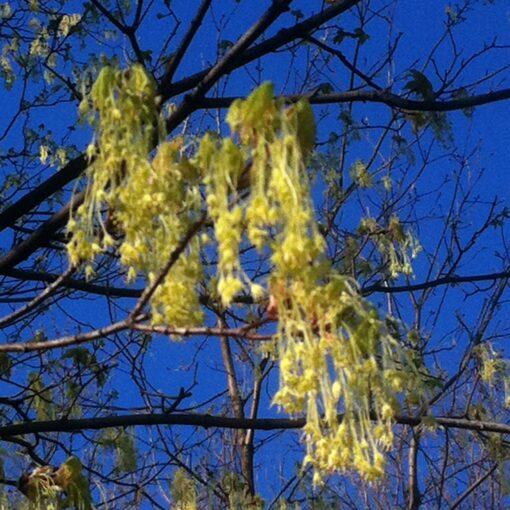
Worked another extraction this weekend for a local building management company and every time I am on one I learn to be a bit more efficient and wanted to share my list. If there is the opportunity to make a small hole first when starting and extraction this is ideal. So the trick is to annoy the aggressive bees and get them out of a small hole and grab them with the vacuum right away. This time around I broke through the drywall with a small hole and kept banging on the ceiling to annoy them. I then opened a hole about 6 inches square. This really helped as the aggressive bees rushed the opening and right into the vacuum. I did get stung on the finger once but was when lifting out some comb and I pinned the bee between my finger and some comb. This hive was a good size and obviously several years old based on the color of the comb. The management company brought along a heat sensor and gave me the pictures. Here is my list. Enjoy!
- 9 mil Nitrile gloves – Bring the box: that nail tip always seems to be where you can find it with the back of your hand.
- Baby powder – can quickly dry clean sticky honey hands to get in and out of gloves
- Cordless drill – who uses screwdrivers…?
- Dot gloves – I use these for everything and have an extra pair in each car and randomly around the shop. Your hands are the best tools you will ever own keep them protected!
- Duct tape – tape up your pant legs and wrists to keep the bees out. This is essential if taking out a hive within a floor. The bees go right up your legs and sting your ankles. Also, tape up the shop vac for the ride home.
- Framing hammer – this can be used as another crowbar and always helpful to have a large hammer handy. The longer handle gives great leverage and hammering force.
- Large bin with well sealable top – carry out the comb. Any good Tupperware bin with a sealable top is best so bees don’t get out in your trunk on the ride home.
- Large flat spatula – this is essential to slice and scrape out comb. Also, this can be used to lift out large pieces of the comb. I have a vintage one with a large stainless steel triangle blade and almost square corners. The handle is heavier stainless and is riveted to the blade which makes it a bit stronger than today’s bent spatulas
- Old 5 gallon pail – can be used to stand on and carry tools
- Reciprocating saw – may have to cut something heaver than just drywall
- Several extension cords – the outlet is never near where you need it
- Small flashlight – the bees will always be back in the darkest corner
- Small flat crowbar – pry out the drywall
- Utility knife – don’t rely on your good pocket knife that is just a backup
- Work gloves – These provide some protection then put the nitrile gloves over these. It will make the nitrile last a little longer and feel a bit more comfortable. The nitrile gloves provide ease of cleanup. I wash my hands with the gloves on if the gloves are in good shape. I can easily get at least 2 perhaps 3 uses out of a pair of nitrile gloves.
- Incense – the smoker in someone’s house may be a bit much. I have used incense to calm down the bees a bit and is fairly innocuous to homeowners but always ask.
- Shop vac – I have 2 modified DeWalt shop vacuums. The DC500 is a 2-gallon vac which is light and small and will hold a lot of bees. I have drilled a ¾ inch hole in the drain cover by removing the rubber washer and replacing it with a piece of metal screening. This works perfectly by reducing the vacuum enough so you don’t kill the bees and you can always put the rubber washer back if you need the higher suction.
- Power strip – I keep one handy if I am using multiple tools and don’t have to waste time swapping cords
- Queen catcher clip – I rarely see the queen on extractions typically I get her in the vacuum.
- Water – always seems to be the hottest part of the summer when I get most calls.
- Bee suit and Jacket with screened hood – I like the screened ones as they seem a little less claustrophobic to me as I can unzip them quickly
- Tie wraps and rubber bands to tie the comb to frames. See the link from Staples size #33
- Ladder – very handy and portable








